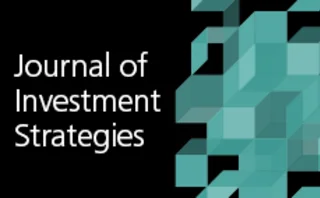Conditional value-at-risk (CVAR)
Incremental value-at-risk
This paper proposes a novel method for estimating future operational risk capital: incremental value-at-risk (IVaR)
Small, speculative clearing members – are they worth the risk?
CCPs need new tools to scrutinise their members, for everyone’s good health
A triptych approach for reverse stress testing of complex portfolios
Pascal Traccucci et al present an extended reverse stress test triptych approach with three variables
Making Cornish–Fisher fit for risk measurement
In this paper, the authors develop a computational method to find a unique, corrected Cornish–Fisher distribution efficiently for a wide range of skewnesses and kurtoses.
Esma preps stricter stress-testing rules for EU funds
New guidance expected to be released for consultation in early 2019
Impact of D-vine structure on risk estimation
In this paper, a sensitivity analysis using pair–copula decomposition of multivariate dependency models is performed on estimates of value-at-risk (VaR) and conditional value-at-risk (CVaR).
The CoCVaR approach: systemic risk contribution measurement
In this paper, the authors propose a measure for systemic risk, CoCVaR, the conditional value-at-risk (CVaR) of the financial system conditional on an institution being in financial distress.
Optimal equity protection of Solvency II regulated portfolios
In the context of equity investments, this paper examines the relationship between the cost of acquiring protection (in the form of put option) and the reduction of capital charges that it entails. The paper develops the idea that Solvency II regulations…
Risk constraints for portfolio optimization with fixed-fee transaction cost
In this paper the authors investigate how fixed-fee transaction costs affect portfolio rebalancing.
Clearing house innovation of the year: Nodal Clear
Risk Awards 2017: Bold decision to ditch VAR in favour of expected shortfall pays off
Analytical method of computing stressed value-at-risk with conditional value-at-risk
The author of this paper develops an analytical form of stressed value-at-risk (analytical SVaR), using conditional value-at-risk (CoVaR).
VAR versus expected shortfall: why Priips has got it wrong
Hardwiring of older risk measure into Priips means risk ratings could mislead investors
Why the Priips risk indicators hurt structured products
Risk ratings ignore soft barrier protection and make differentiation difficult
SEC prepares Dodd-Frank buy-side stress tests
Asset manager stress tests aim to measure fund liquidity and contagion risks
Outperforming benchmarks with their derivatives: theory and empirical evidence
This paper looks for optimal explicit constructions and empirical tests in regards to pricing and hedging derivatives with coherent risk measures.
Suboptimality in portfolio conditional value-at-risk optimization
This paper considers the portfolio optimization problem, with conditional value-at-risk as the objective.
Estimation of risk measures on electricity markets with fat-tailed distributions
This paper proposes an AR–GARCH-type EVT model with various innovations for energy price risk quantification.
Back-testing expected shortfall
Three easy-to-implement methods for back-testing expected shortfall
A Fourier approach to the computation of conditional value-at-risk and optimized certainty equivalents
We consider the class of risk measures associated with optimized certainty equivalents.
The properties of expectiles explored
Expectiles’ risk contributions are essentially the same as those of expected shortfall










